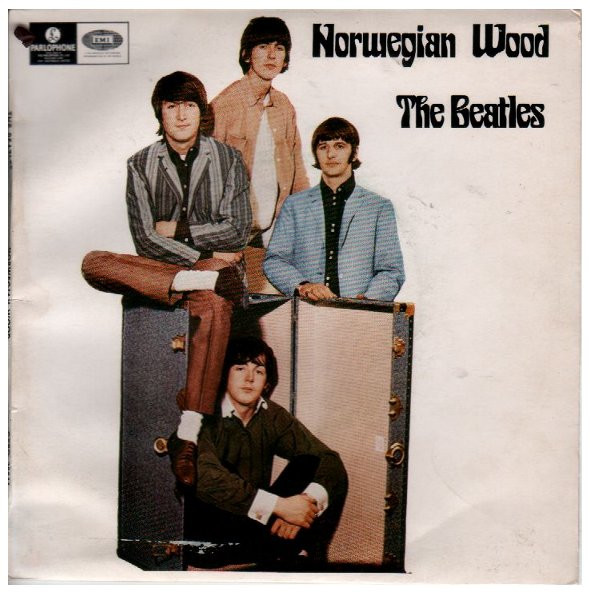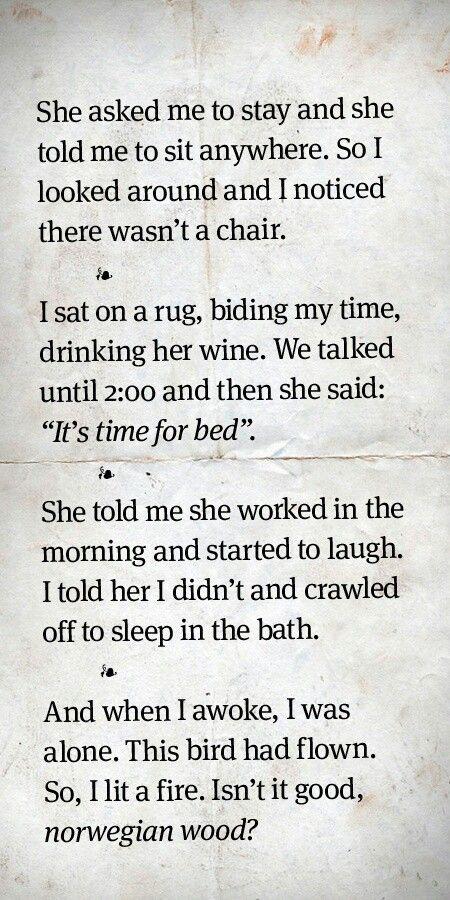Both architecture and music are art forms, and although they express themselves differently, they are united through rhythm and proportion to generate creativity and ideas. Therefore, buildings and songs are the result of these ideas. Rhythm, for example, gives a song its distinctive beat, while in architecture it defines the shape of a structure. In proportion, they help create songs through notes and intervals; in architecture, proportion helps ensure the correct balance of a building. So it’s no surprise that music can influence architecture: from the moment an idea is thought/born and developed to the final result.
A piece of music that has lome link to arquitecture could be “Norwegian Wood” by the Beatles, A song about hipster apartments, falling in love, and bad seating arrangements. This song not only involves arquietcture on its lyrics but also its composition can be related to the composition of an architectural work. This song was written by John Lehnon and lyrical contributions from Paul McCartney, its genre is folk rock, was released the 3rd of December in 1965 and was recorded the 21st of October and the instrument used is the sitar, which wasnt that common on those days.


The song tells the story of a man recalling a past relationship and reflecting on the events that led to it. Upon release, the song’s enigmatic nature had fans and critics alike debating its meaning and deciphering its true meaning. While the song has been read in many ways, some of the most popular theories suggest that “Norwegian Wood” is about a man’s failed relationships, his desire to escape pain, and his desire for a simple life. Ultimately, the true meaning of “Norwegian Forest” remains to be explained, but its timelessness and complexity make it a Final Four fan favorite.
Haruki Murakami’s Norwegian Wood is a stunning novel that tells the story of Toru Watanabe, a Japanese man living in Tokyo in the late 1960s/early 70s Japanese college students. The suicide of Kizuki, Toru’s only friend from high school, and his relationship with Kizuki’s girlfriend Naoko are issues Toru must deal with. Forests and groves are symbols of both youth and madness in the novel, and their use heralds times of chaos and darkness. Woods and forests are sources of comfort and healing in the novel, a theme that plays out throughout the book as characters are drawn there for comfort and healing. Naoko, for example, retreats to a peaceful mountain forest to combat depression. Trees and forests are used to represent the intensity of emotions and struggles Toru, Naoko, and the other characters face as they grow up dealing with mental illness. Toru and Naoko are on their own, but the woods and forests become their comfort and refuge. Takashi Murakami shows how nature can bring comfort and hope when night falls in Norwegian forests.
So this shows how it’s not only a song, it has many symbols and emotions throughout the entire song, therefore we can see a conection to architecture, that in the end it’s also a way of artistic expression. Music and arquitecture has many more things in common that what we expect for example, we only have to pay attention to many years back, From the lively polyphony of the Baroque to the grandly structured harmonics of the Romantic era. From the established symmetry and balance of classical music to the unconventional shapes and colors of the modern day. Musical aesthetics and architecture go hand in hand.
